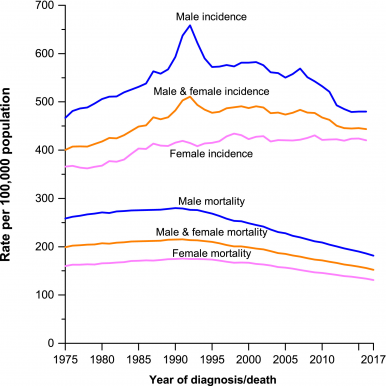The cancer death rate in the United States dropped 2.2% from 2016 to 2017, the most recent data available. This is the largest annual decrease ever reported.

“Long‐term trends in cancer incidence rates for all cancers combined by sex.” From Siegel, R. L., Miller, K. D., & Jemal, A. (2020). Cancer statistics, 2020. CA: a cancer journal for clinicians, 70(1), 7–30. doi:10.3322/caac.21590.
In discussing this American Cancer Society data, numerous outlets quoted MSK physicians. In The Wall Street Journal, Dr. Helena Yu pointed to advances in immunotherapy as one factor in the decline. On NBC Nightly News, Dr. Larry Norton mentioned these treatment advances while describing some areas of concern. While screening is “very good” for colorectal cancer and breast cancer, he said, “not everybody is taking advantage of that.”
Stat News and Biopharmadrive.com included content tweeted by Dr. Peter Bach. He noted that the increase in other causes of death, like suicide and overdoses, may have contributed to the decline in cancer mortality.
